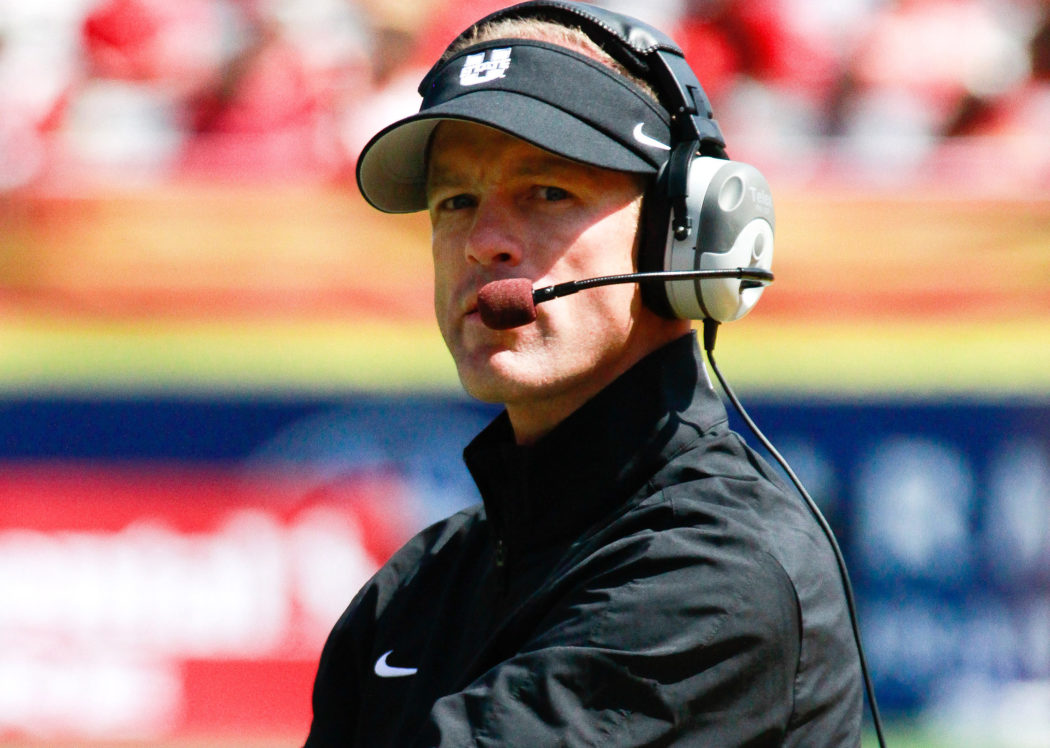COLUMN: Should Utah State abandon the hurry-up offense?
At the start of offseason workouts when I first joined the varsity football team at my high school, the head coach stood in front of the team and said the offense would implement a hurry-up style. He told us that the goal would be to snap the ball within 6-8 seconds after the end of the previous play.
Back in the early 2000s, such an idea would have been radical, absurd, and even laughable to some. A hurry-up offense (or no-huddle depending on who you ask) was only for the two-minute drill, when time was working against you. But this was in 2011, when utilizing a hurry-up offense outside of the last two minutes of a close game was becoming a trend, with the University of Oregon being the face of the fast-pace philosophy.
Now in 2018, the fad has died off a little, though not entirely. Plenty of football teams use it to great effect. Mainly because there are some great benefits to be had when used tactically.
The hurry-up offense can create an advantage in a few different ways. Most simple among them is that defenses tend to tire a little quicker than offenses. Another of the major reasons is to catch a defense in a bad personnel group. If the defense has too many defensive backs (or too few) or they have their front seven is stacked with pass-rushing specialists who are weaker against the run, the offense can exploit those mismatches and get better results on offense.
There is a drawback to hurry-up offenses, and this is why I brought up my high school playing days. If the offense doesn’t maintain a drive, YOUR defense suffers by being forced back onto the field after an abbreviated resting period on the sideline. This was the case in many of my high school games. The offense would go out, run three plays, fail to get a first down, and be off the field in 30-35 seconds.
Under Matt Wells, the hurry-up has become a tool drawn on quite often. Unfortunately, the result of that philosophy has been less of what Oregon was able to do and more of what happened at my high school. Last season the Aggies ranked 120th of 129 teams in time of possession. On average the offense was on the field for 26:38, less than 45 percent of game time.
Time of possession is far from an end-all-be-all statistic. Four of the top 10 teams in time of possession last year finished with losing records, and Chip Kelly’s fast-paced teams often lost the time of possession battle in games they won by 50+ points (Kelly himself scoffed at the stat, disregarding arguments for its importance). UFC, who went 13-0, was 105th in time of possession, and three teams in the bottom 10 had winning records — two had 10+ win seasons.
However, the correlation between time of possession and winning is there. The top 25 teams in time of possession went 189-130 (.592), or about the same as an eight-win team. The bottom 25 finished 146-169 (.463), a team just short of a bowl game.
Generally, the thing that saves a team with poor time of possession from a losing season is having a great offense, or a great turnover margin. Almost every team in the bottom 25 in time of possession that had a winning record had either a great offense or turnover margin, sometimes both.
Last year Utah State was one of the better teams in terms of turnover margin, ranking 30th among all teams. Unfortunately, it might be foolhardy to depend on the Aggies repeating such a feat. In 2015-16 and 2016-17, the team ranked 84th and 98th respectively. And of the 30 turnovers forced, 10 came from now-graduated seniors Jalen Davis and Dallin Leavitt. The offense will have to pick up more slack if the hurry-up offense continues to handicap USU time of possession.
It’s safe to assume that the Aggies will improve on offense, perhaps drastically. But most of the teams who pushed through their time of possession problem had a top-20 offense (several were top 10). That’s not a realistic goal to be setting for this team. So unless Matt Wells expects his offense (and the defense’s capacity for forcing turnovers) to be top-notch, there’s no reason to inject urgency into the offense that doesn’t need to be there.


4 words EX-E-Cu-Tion
Regardless of offensive style, if teams are not in sync it doesn’t matter what type of offense is run.
I expect a re-turning offensive line and and QB with a year under his belt will make the scoring stats go up regardless of TOP.